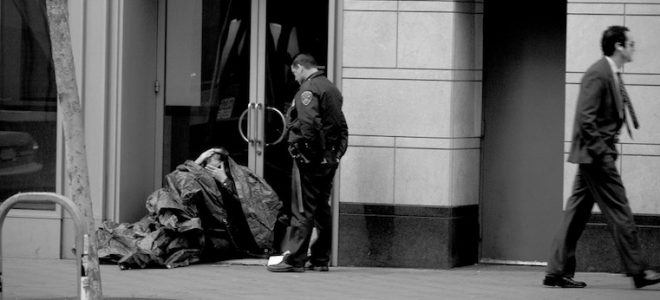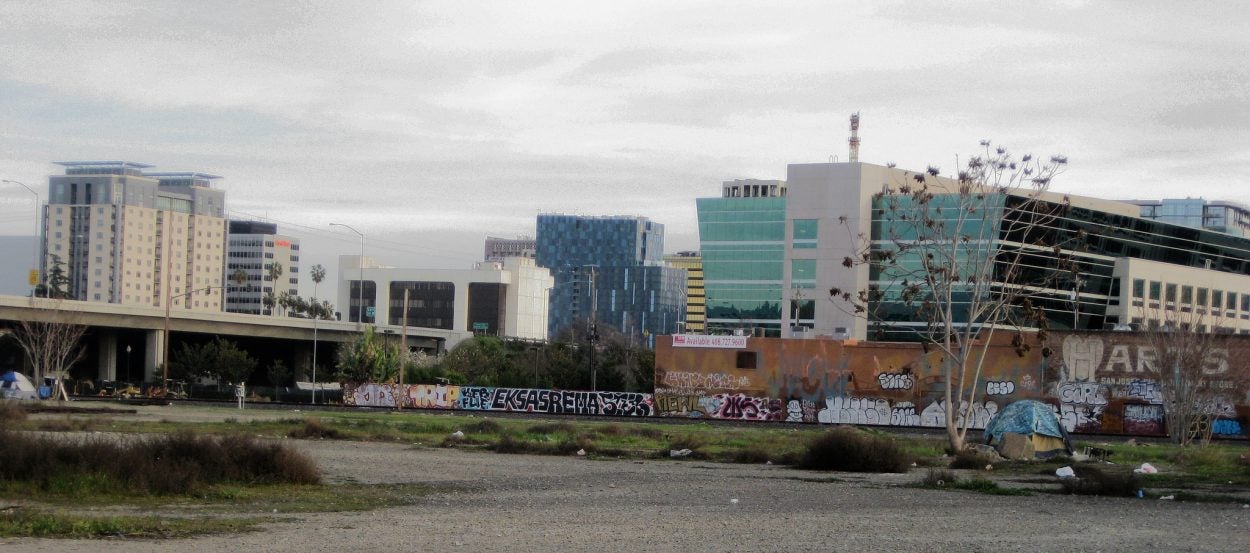

Barbara Kemp came to Boise in 1986. She worked as a technical editor for the U.S. Geological Survey for 20 years while raising her family of three sons. Her involvement with homeless issues began in 2012 with Occupy Boise’s Working Group on Homeless, a group that joined the Boise/Ada County Homeless Coalition in 2013. Barbara served as Vice President of the Coalition in 2014 and President in 2015. She currently serves as Past President on the Executive Committee of the Coalition.
On a Tuesday afternoon last October, the City of Boise’s Director of Parks and Recreation sent an email to the mayor and staff referencing an “interesting” article entitled, “No Direction Home.” The article detailed consequences of San Jose’s eviction of “The Jungle,” its largest homeless encampment, and stated that, nearly a year later, hundreds still lived along city creeks.
The article told a story that soon would be Boise’s own — despite the article’s admonishment: “Elected officials urged to do something about homelessness tend to see evictions as the quickest — and most politically expedient — way of dealing with the problem. But leaders looking for a quick fix would do well to consider the aftermath in San Jose.”
The eviction of The Jungle on December 4, 2014, exactly one year before the City of Boise’s eviction of Cooper Court, merely scattered an already vulnerable community into parks, creeks and hard-to-reach places, frustrating the already difficult work of homeless service providers, advocates and law enforcement. The summer after the Jungle eviction, San Jose law enforcement officers were still arresting the same people, who were still camping along creeks. “I come with consequences,” said one law enforcement officer. “We need more people who come with alternatives.”
Whatever planning went into Boise’s Cooper Court eviction — a police action inexplicably taken just as winter set in — little thought seems to have been given to the aftermath.
Only days after the eviction, a Boise Police Department patrol officer emailed a fellow officer: “Ever since Cooper Ct was cleared out, we have been inundated with transients throughout downtown. The last two nights there have been a handful camping next to the bathrooms at Rhodes Park… I’m hoping you can maybe provide a little information on all of this because us night guys have no idea.”
Barely a season since the Cooper Court eviction we have seen the same, and worse, consequences as those in San Jose. At least two former Cooper Court residents died before the end of March: Perry Woodard by the Boise River in Julia Davis Park and Anita Sletto, whose last “home” was a portable restroom under the Connector next to Boise Fire Station 5. One young and particularly vulnerable young woman was the victim of an attempted strangulation the day after the eviction. These are only the stories we know. Service providers — many mysteriously excluded from knowledge of the eviction — scrambled to locate many former Cooper Court residents they had been serving and completely lost track of others. Also excluded from knowledge of the impending eviction were homeless advocates, the public-at-large and the residents themselves — given less than 24-hours’ notice.

Tragically, the consequences for the former Cooper Court residents only prove what many already knew. We could have learned it from San Jose’s story, which was circulating among key City Staff just weeks before the eviction. We could have learned it from former Boise Police Chief Mike Masterson, who emailed the mayor’s staff in July 2014 to call for a comprehensive problem solving approach that could take advantage of having large numbers of people in need in one area: “…recognizing that this is not a problem where enforcing the law will be sufficient to solve the problem… can we involve partner agencies to reach out for housing and employment services?”
We could have learned it from the clear trend of national experience. Since at least 2009, the United States Interagency Council on Homelessness — 19 federal member agencies that work alongside state and local officials and experts — has pushed for constructive alternatives to criminalization. The Council has made clear that so called “remedies” for homelessness such as the Cooper Court eviction and Boise’s anti-camping ordinance do not solve and “actually exacerbates the problem by adding additional obstacles to overcoming homelessness.” Cooper Court demographics also demonstrate that criminalizing homelessness also criminalizes poverty and mental illness.
The alarming truth, confirmed in a Washington State study last year, is this: modern anti-homeless ordinances share the same form, phrasing and function as historical discrimination laws like Jim Crow. A December 10, 2015, City of Boise email contains a heading: “12.5.15 LAW ENFORCEMENT ADVICE POST COOPER COURT OPERATION.” Specifically referenced then are “the folks that were moved from Cooper Court, ” and then a list of seven “Useful Codes” with code numbers provided: camping on the river, disorderly conduct, offenses against streets, obstructing a fire apparatus lane, obstructing streets, public places, camping in, resisting and obstructing officers. Likely, most Boiseans who are stably housed are unfamiliar with this range of possible offenses; likely, many who are not stably housed are all too familiar with them.
The City’s recent pledge to push for more low-income housing is important — though substantially more is needed and needed more quickly. Equally important: the City must end its criminalization of homelessness. This would include a moratorium on sweeps like the Cooper Court eviction and an end to enforcement of the anti-camping and related laws that marginalize the people most incompatible with shelters and most difficult to serve. The moratorium should extend at least until we have — together — actually built the housing and services infrastructure necessary to meet the most vulnerable where we find them. The director for Downtown Streets, a nonprofit in San Jose and Santa Clara County, summed it up: “You can do sweeps all you want, but people will just keep moving back unless they have a place to go.”
The City of Boise chose a mass eviction and continues to cite homeless people for “camping” and violation of other “useful codes” — effective strategies for concealing poverty and for separating vulnerable citizens from services. As constructive solutions, however, they fail — just as they did in San Jose, just as they have everywhere else, and just as they always will.
The Blue Review Homelessness Colloquy.
A TBR series on homelessness in Idaho